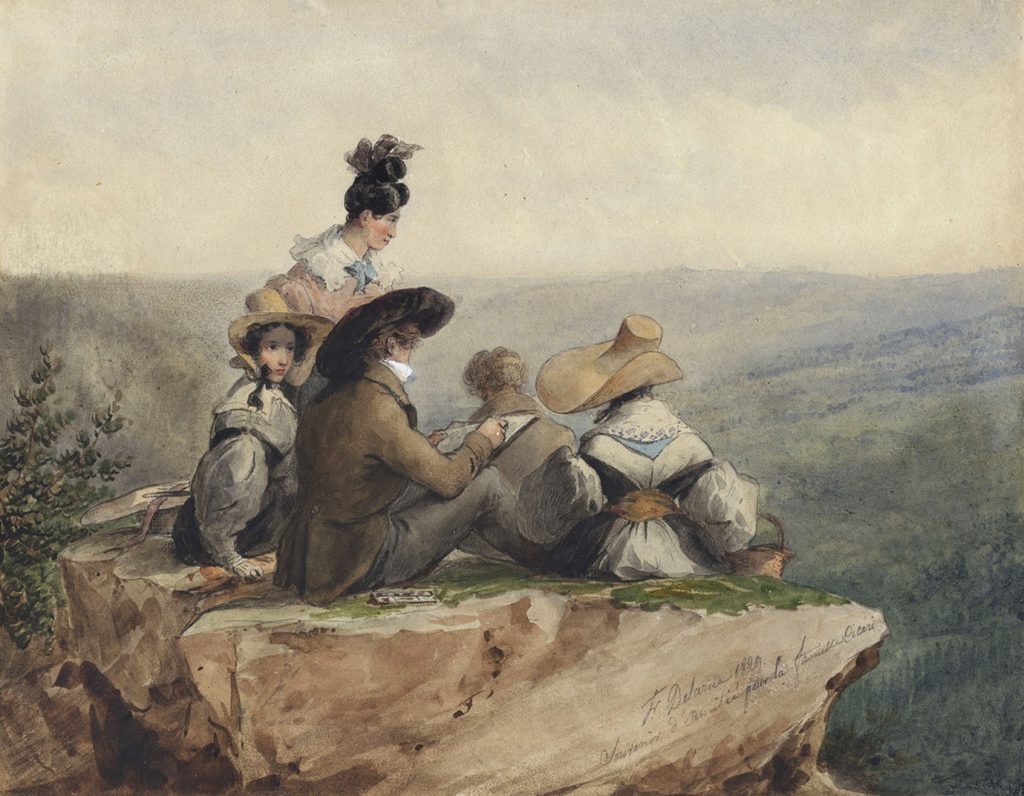La Famille Ciceri
Ciceri Family
Watercolor on paper, 1829
Signed, dated and inscribed on the rock F. Delarue 1829. – Souvenir d’amitié pour la famille Cicéri
Size
185 x 238 mm
Provenance
Private collection, France
Exhibition
Five people are sitting on a sturdy promontory rock, overlooking a deep valley and a wide scenery of woodland. From a slighly lower point, the author of the present watercolor is drawing them. Fortuné Delarue, born in Amiens, an artist known for his caricature of the Parisian life, took care to sign and dedicate his work on the side of the rock. With gentleness and affection, he made the souvenir of a moment passed with the family Ciceri, in 1829, in the Fontainebleau forest. The father, Charles is seen from side-on, wearing a hat with large brims, is also drawing . Near him, are his two daughters, Félicie, nineteen, looks at him, and, on the right, Jeanne, fifteen is dangerously sitting on the edge of the rock. The eldest son, Eugène, his back turned to us, is also scrutinizing the landscape as his father, his head bent possibly on a sheet of paper. Finally, Alexandrine, standing, completes the group. A daughter of Jean-Baptiste Isabey, she is married to Charles since nineteen years ; here she looks, fascinated, into the depths of the impressive scenery.
Charles Cicéri, chief-stage designer of the Opera, had just finished several journeys through the south of France up to Marseille and had been to Italy in 1827, and Switzerland in 1829. Returned to Paris, he used his free time to look after interesting patterns in nearby forests. As his painter friends, Théodore Caruelle d’Aligny and Jean-Baptiste Camille Corot he was fascinated by the forest of Fontainebleau. His son Eugène who was only sixteen, discovered, thanks to him, his calling as a landscape painter and what became later on his adopted region. Some year later he bought a house in the village of Barbizon, that he later sold to the painter Charles Jacque and settled himself in the village of Marlotte (now Bourron-Marlotte) close to Fontainebleau.
The author of this touching group portrait could have been engaged then with one of the daughters of Ciceri, a point which might have explained his presence on that occasion. It could have been Félicie, the eldest daughter whose delicate face is graciously drawn by the artist, on the left. However, the engagement never took place, and the young girl got married six years later with François-Joseph Noleau (1804-1883) a stage-designer of theatre, a former pupil of her father.






